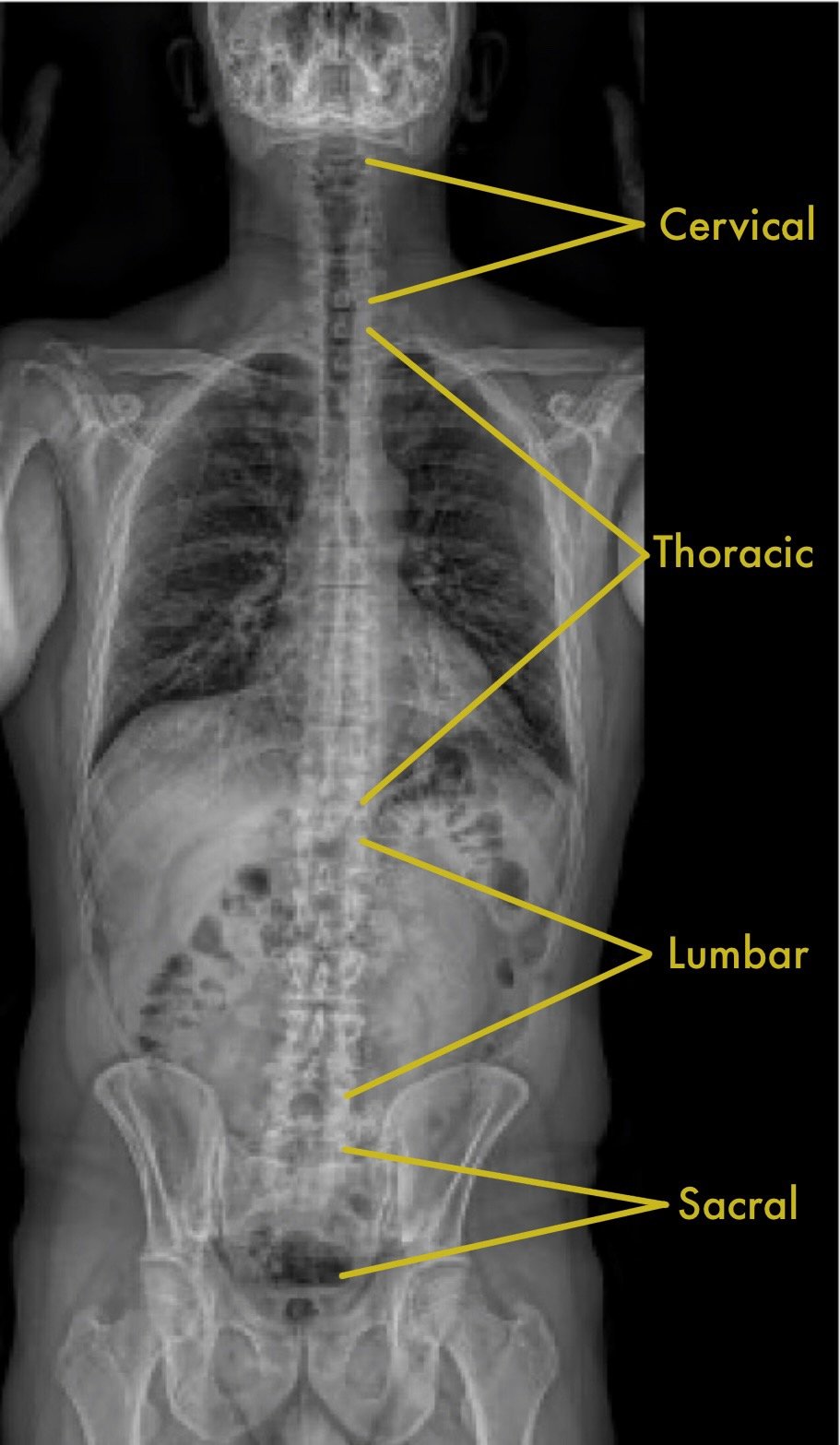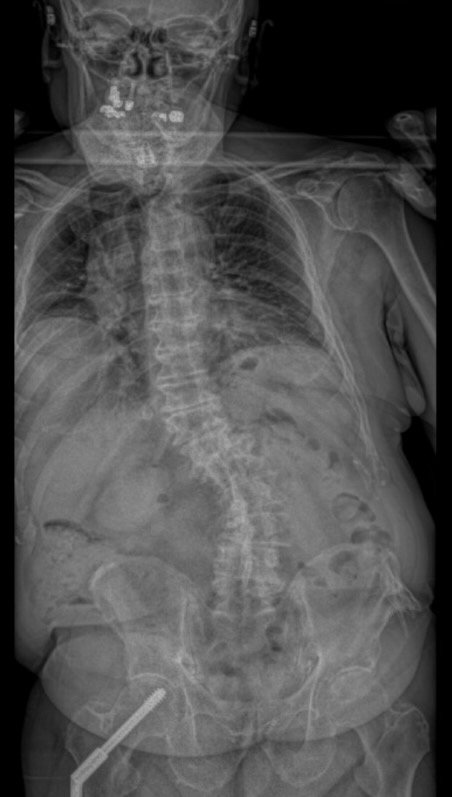Spinal Column
Your spine runs from the bottom of your head all the way down to your tailbone. The spine has two main jobs: provide support to your body and protect your spinal cord.
The spine is split into three sections: cervical, thoracic, and lumbar. Your cervical spine (also known as the neck) has seven bones. The thoracic spine has twelve bones and the lumber spine has five bones. At the bottom of the spine is the sacrum, also know as the tailbone.
Building Blocks of the Spine
Scoliosis
In most people, the spine is straight, allowing for upright posture. However, some people have curved spines, also known as scoliosis. When the spine curves it can hurt the spinal cord, causing back pain. Scoliosis can be congenital (something that you are born with) or it can develop over time as you age.
The spine is made up of two building blocks: bones and disks. These two alternate and stack on top of each other, sort of like Legos.
The bones provide rigid support for the spine and protect the spinal cord. The front part of the bone is the vertebral body, which alternates with the disks. The spinous processes are on the back of the spine, and are the bumps that you feel if you run your hand down your back. Disks act as shock absorbers, preventing the vertebral bodies from grinding together. Additionally, the disks support movement, allowing the spine to bend back and forth.
The bones of the spinal column create a hollow space, called the spinal canal. The spinal cord lives in the spinal canal and travels from the top of the cervical spine down to the lumbar spine. At each level, the spinal cord gives off nerve roots, which allow for information to travel to the rest of the body.
MRI of the lumbar spine (sagittal view)
MRI of the lumbar spine (axial view)
X-Ray of the spine
In order to diagnose scoliosis, an x-ray is taken of the entire spine. If the curve of the spine is greater than 10 degrees, a person has scoliosis.
When younger people are diagnosed with scoliosis, they sometimes have to wear a back brace. This brace wraps around their mid-section and low back, preventing their spine from curving. In extreme cases, when scoliosis is causing pain or affecting a person’s life, surgery will be performed. During this surgery, screws and rods are placed into the spine to straighten and support it.
Scoliosis x-ray of the spine







